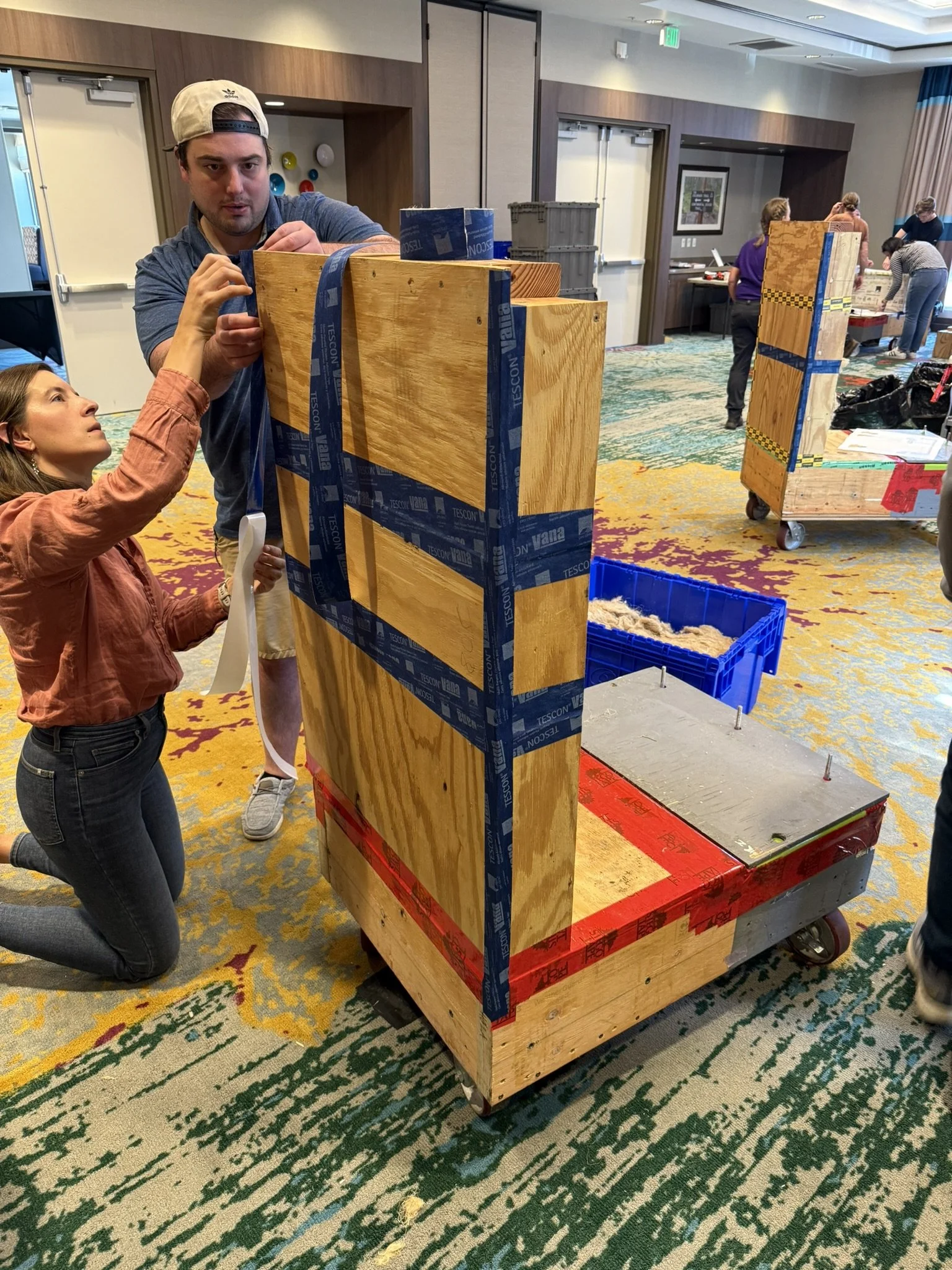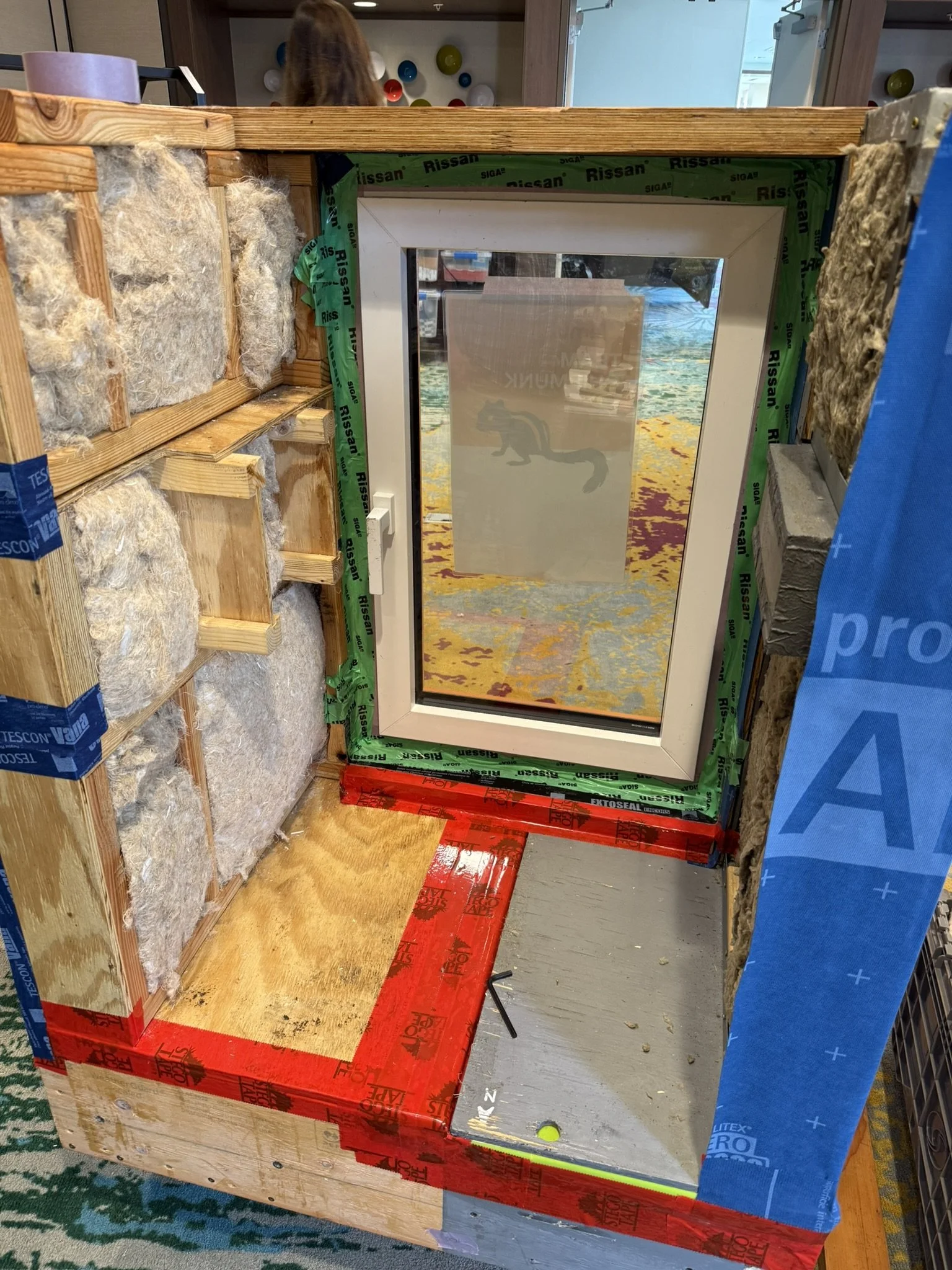CPHD / T - What Does it Mean?
Hands-on training with Emu Passive for the Certified Passive House Tradesperson course.
Why Certification Matters: A Conversation About Passive House Design
If you’re unfamiliar with Passive House design, it’s a proven building science methodology developed in Germany in 1990. Its goal: to reduce heating and cooling costs, increase occupant comfort, and improve indoor air quality — all through five key principles of high performance architecture:
Airtight enclosure
Continuous insulation
High-performance windows and doors
Fresh, filtered air through an ERV/HRV system
Thermal bridge–free construction
Despite the name, a Passive House doesn’t have to be a house — the same standards can apply to hospitals, multifamily housing, libraries, or any building people occupy. The result is a space that performs exceptionally well, feels comfortable in every season, and operates with minimal energy use.
Why Homeowners Care About Certification
Passive House is considered the gold standard for comfort and energy efficiency in buildings. While the five core principles may sound simple, achieving Passive House certification is a rigorous process requiring careful coordination from the very first design discussion.
The certification process provides structure and accountability. Certified designers and builders are trained to apply Passive House principles precisely — balancing performance, comfort, and cost. For homeowners, working with Certified Passive House Designers (CPHDs) and Certified Passive House Tradespeople (CPHTs) ensures your project is planned, detailed, and executed to meet its performance goals from day one.
When your team is certified, you’re not experimenting — you’re investing in proven, measurable results.
Why Pursue Both CPHD and CPHT Certifications?
A Certified Passive House Designer (CPHD) is typically a licensed design professional — such as an architect or engineer — trained to perform the detailed calculations and performance modeling that make Passive House possible. This certification emphasizes how design decisions directly impact a building’s energy use and occupant comfort.
The Certified Passive House Tradesperson (CPHT) credential, on the other hand, focuses on construction practice. It’s available to anyone — including contractors, builders, or even homeowners — and provides hands-on training with the materials and methods used in high performance construction.
Marisol pursued both certifications because design doesn’t stop at drawings. Understanding how a building comes together on-site allows us to communicate more effectively with contractors, anticipate potential challenges, and deliver a home that meets the design intent and performance goals. It creates a truly collaborative process between design and construction, which is the foundation of every successful high-performance project.
What Will I Sacrifice by Choosing Passive House?
In short — nothing essential. Passive House doesn’t dictate style or aesthetics; it’s a performance standard, not a design language. Whether you envision a contemporary home, a traditional farmhouse, or something entirely unique, a certified Passive House designer can design to your preferred aesthetic while meeting performance targets.
The key is timing. Costs can escalate if Passive House certification is added late in the process, since redesigning to meet performance metrics often means reworking details, insulation levels, and mechanical systems. When certification is part of the conversation from the start, your architect can make smart design decisions that support both your vision and your budget.
By aligning the team early — architect, builder, and trades — you gain a home that performs beautifully, feels consistently comfortable, and saves energy every day of its life.
In Summary
Choosing to work with certified Passive House professionals is one of the best ways to ensure your home is built to the highest standards of comfort, durability, and energy performance. Certification isn’t just about credentials — it’s about expertise, communication, and a shared commitment to quality.
When you invest in high performance architecture, you’re not only building a better home — you’re building smarter for the future.
During the training, small “pods” are constructed to test sequencing and products. The pods are then tested for airtightness and thermal comfort through a simulated blower test and overnight heat loss evaluation.



